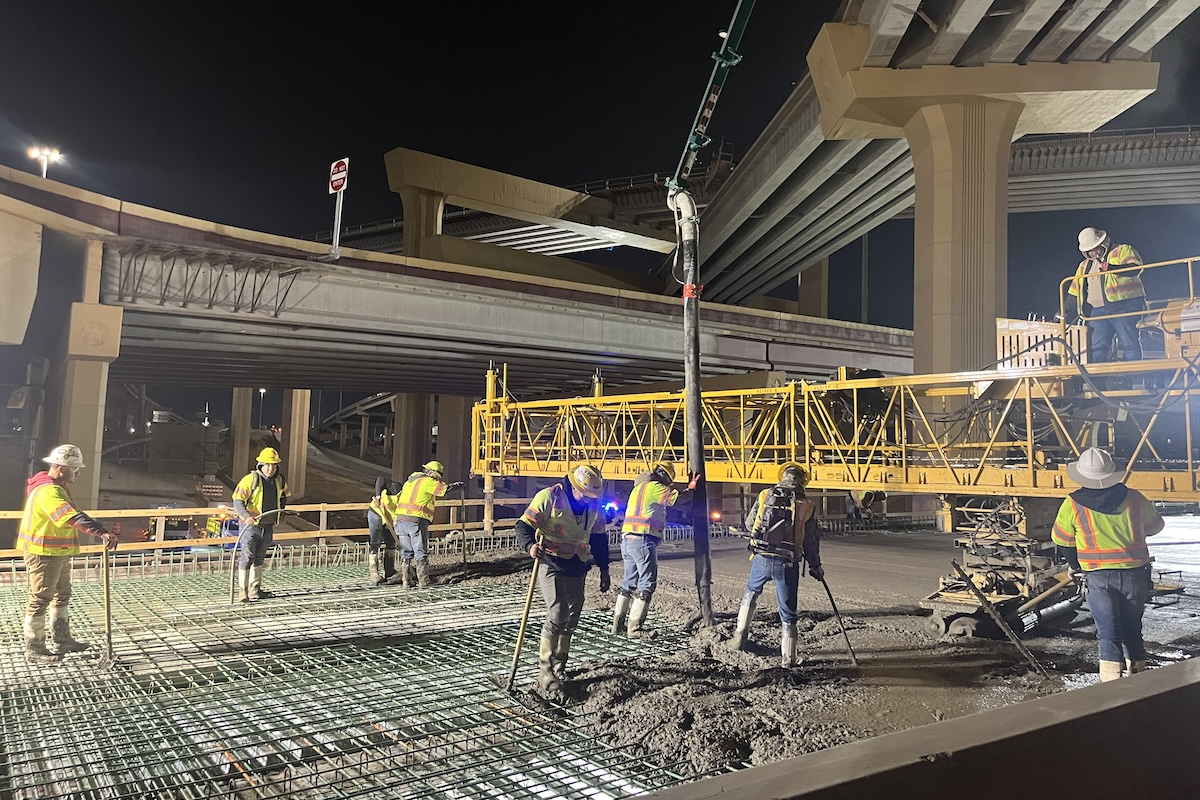Many tech-enabled solutions in the construction space today – and likely for the near future – are largely focused on task automation, or the use of technology to automate routine tasks such as digging trenches or compacting surfaces. These systems are tried and tested in real-world environments with impressive benefits, so much so that industry experts believe they are integral to the road ahead.
In its 2022 Future of Building report, the Association of Equipment Manufacturers (AEM) calls the “pathway toward autonomous machinery” and the move to “situational automation” one of the top 10 key trends that could “dramatically change the way construction companies operate in North America” over the next 10 years.
Already, automated operations help contractors greatly improve productivity, manage labor shortages, use materials more efficiently, and deliver higher quality, more sustainable projects. And for future-looking pioneers looking for transformative results, automation is the foundation for future autonomous job sites. Task automation, along with connectivity and the real-time data exchange between different systems, is an essential piece of the construction’s Industry 4.0 evolution – and the industry is rife with impressive examples.
But machine control is one small piece of the task automation puzzle, and manufacturers and technology firms are expanding those boundaries every day. For instance, Trimble’s horizontal steering control system for soil compactors is able to perform repetitive functions of multiple passes over a project with greater accuracy than a human operator, while giving the operator override control.

| Your local Hitachi dealer |
|---|
| Bane Machinery |
| ASCO Equipment |
The convergence of key technologies is enabling the industry to accelerate towards both automating tasks and, perhaps more importantly, optimizing the site management/machine workgroups.
At its user conference, Trimble demonstrated an autonomous Link-Belt 220 Excavator, a remote-controlled Komatsu D51PX Dozer and an autonomous Dynapac CA2500 Compactor – all working in unison to execute a project. The excavator traveled to a designated spot and dug a trench. Nearby, an operator remotely operated a semi-autonomous dozer to automate the blade, keep it at the desired elevation and steer the machine. Finally, a fully autonomous compactor was sent a “mission plan” with boundary lines and the optimum compaction level, which using its path planning software, created an optimal methodology to complete the task as efficiently as possible. Also, all of the equipment was equipped with safety sensors to stop if an obstacle enters its work path.
Although these emerging technology solutions show great promise for the future, making them jobsite-ready and bringing them into the mainstream will require some additional work.
These automated systems will be more robust, more flexible and smarter so as to handle different situations, to conceptualize patterns and processes and “learn” behaviors, such as avoiding obstacles, that we as humans do automatically.
Artificial Intelligence (AI) and machine learning are integral pieces of this progression.
AI allows for the perception of the environment the machines operate in, which will play a role in optimization of the site, for example making recommendations about task sequencing. Contractors will be able to optimize various site operations – from equipment selection to material logistics – in ways that we have yet to consider.
Right now, for example, the Spot quadrupedal robot that Trimble and Boston Dynamics equipped with scanning capabilities for data capture on construction sites is taught by a human how to navigate safely through a site when operating autonomously. Someday, Spot will be taught a safe path through a site management solution – and eventually, entirely on its own with just a mission plan.
To achieve that goal, however, we must turn real-time data into real-time information to optimize and coordinate the workgroups of machines and the site, which goes well beyond task-based point solutions.
The industry can reduce workforce challenges by increasing the degree of task automation on a jobsite – it’s just a matter of putting more intelligence into solutions to further optimize project delivery and productivity. In fact, task automation could be a workforce shortage equalizer, as it not only reduces the labor requirements on a job, but reshapes the perception of the construction industry beyond boots and hardhats to one that invites digital creativity.
Task automation can significantly improve those numbers. In the first of many studies, Trimble scientifically compared fuel use, time spent and overall carbon reduction benefits that can be realized using automated solutions.
In this first study of automation versus manual operation, the focus was on horizontal steering control on a soil compactor. The cumulative results of all trials (20 automated/20 manual) found that the use of assisted steering compared to manual steering led to a threefold savings:
- Average time reduction of 43.8 minutes (29.4 percent)
- Average reduction of fuel consumption of 1.65 gallons (26.46 percent)
- Potential carbon savings has much as 39 percent
As nearly every forward-thinking company has set sustainability goals, those are numbers to build on. That said, achieving the most ambitious sustainability goals and improving productivity and efficiency in measurable ways will require the construction industry to look towards more intelligent solutions. Task automation sets a foundation for digital twins, smart robots, and the autonomous jobsite – solutions that will drive even greater improvements in productivity, improve operating margins, attract new talent and set the stage for continued progress on the path toward autonomy.









































































